QuestionI have two 9-month old Bouviers and we live in a rural area of Central
America. Although we do have a huge back yard, we walk our dogs twice a
day for about half an hour. On these walks, if a car passes by (no more than
two in a day), our male dog will get very aggressive, and will try to bite our
legs and arms, drool and bark loud enough to be heard miles away from the
time he sees the car until he can't see or hear it any longer. We have tried the
preventive way (cookies and distractions), the water balloons being thrown
from cars, stopping the cars to introduce its occupants, taking him to the city
to see tons of cars (not much happened there) and the list goes on...He has
dislocated my shoulder, broken a finger and bitten me many times in my
ankles...Other than when a car comes by, he walks on my side and is happy
and obedient -- loves to walk and once back, even with such an event he is
okay. He has two houses we pass - one has a big rotweiller and the other a
small mutt -- he will bark and react the same way as for a car if the mutt
even looks at him. However, I can make him sit and quiet down for that, but
out of the blue, he may just jump and start the whole show once again...I love
my dogs, there are no trainers here and we have done all we can by following
famous trainer's books -- but they are strong and getting stronger by the
day, and what to do? Once they get into that frenzy, there is no turning back,
they are deaf and with a fierce mandate: get that car, or send it off! Can you
give us some new directions to try out? Please?...Thanks!
AnswerUnfortunately, you may have incorrectly used the techniques you mentioned; feeding treats depends upon your close observation of the dog. If the dog is anxious and reacting, you are REWARDING the anxiety and reaction. Water balloons thrown out of cars gives the dog A REASON for anxiety and aggression; stopping the cars, whether or not the occupants are introduced, ALSO increases anxiety. And bringing the dog where there are LOTS OF CARS is called "flooding" and can seriously worsen a problem behavior. The Bouvier is a guarding breed and a very tough, independent thinker. Your male has decided these cars are an imminent threat and his behavior is most likely trickling down to the female. If you have opposite sex of this breed in order to produce puppies, DO NOT DO IT. You will be BREEDING A PROBLEM, the last thing your breed needs is more problem behaviors. Your male is fearful and demonstrating aggression which is being referred to you. YOU DO NOT WANT to breed him.
These dogs need to be rehabilitated to these events SEPARATELY. You can purchase Halti collars or Gentle Leader collars, both head collars, on the internet. These collars are used WITH a strong martingale collar such as this one:
http://www.leashesbydesign.com/Martingale%20Collar.html
Do NOT use choker collars or any other sort of punisher. The head collar is used to change the dog's physical direction and it works just as does a horse's bridle. The dog will not be able to jump up, mouth you or pull you. He will HAVE to follow your direction.
Set the dog up: ask someone you know (with a car) to spend an hour or so with you. The dog won't recognize that the same cars are passing. Carry a whistle with you (a police whistle, also available on the internet.) Ask the car to approach slowly. Observe the dog (remember you are doing this with both dogs, separately) and BEFORE he can develop a full blown panic attack, BLOW the whistle (strong distraction) and change directions quickly, away from the approaching car. Have the car continue to approach slowly at first (the car's speed will increase to normal as the dog begins to demonstrate less excitability over the course of several trials.) Now, turn the dog back toward the approaching car and try again. Observe the dog very closely; EVERY TIME you see the dog's excitability begin to increase, blow the whistle and change direction away from the car QUICKLY, then turn back. You will begin to see the dog decreasing in anxiety; this will take many, many trials (possibly) but it will eventually occur. Once the dog is no longer offering any objectionable behavior to the approach of your friend's car (you may have to repeat this treatment several times over a few days, but don't overdo it), you can THEN begin to offer the dog a special food treat BUT you MUST BE SURE the dog is not experiencing any anxiety. Use the whistle and turn around in the other direction if the dog shows ANY excitability (other than a normal one). Two things are being accomplished: desensitizing the dog to approaching vehicles while establishing your higher rank (the dog now thinks he's in charge), and conditioning a response to the whistle ("STOP", turn around.) Unfortunately, you may have so scant vehicular traffic that it may be difficult to repeat this exercise on a daily basis (friends will only spend just so much time doing this), so you have to be very vigilant for at least the first few weeks. And you have to walk the dogs separately as you will not be able to conduct this behavior modification with two such large dogs at once. BUT, it will eventually work. You must be very vigilant and read your dogs' body signals quite closely; you must be prepared to blow the whistle and change direction the MOMENT the dog BEGINS to show signs of anxiety; and you must be prepared to offer food treat when the dog is clearly tolerating the approaching vehicle.
Regarding the other dogs in their yards: the head collar is necessary here, also. The whistle will have become an instant signal to the dog to "STOP, change direction" and should work wonderfully by this time. Do not walk the dogs past the yards containing the other dogs until you have solved the problem with the cars.

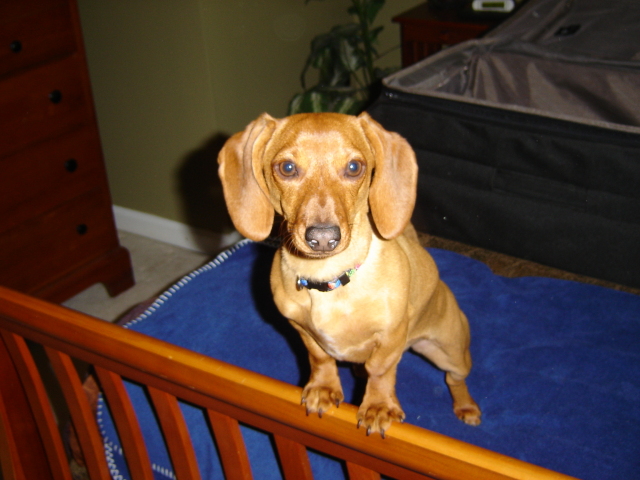 Mini Daschund with anxiety issues
QuestionAbigayle
QUESTION: I have a 3 1/2 yr old
Mini Daschund with anxiety issues
QuestionAbigayle
QUESTION: I have a 3 1/2 yr old
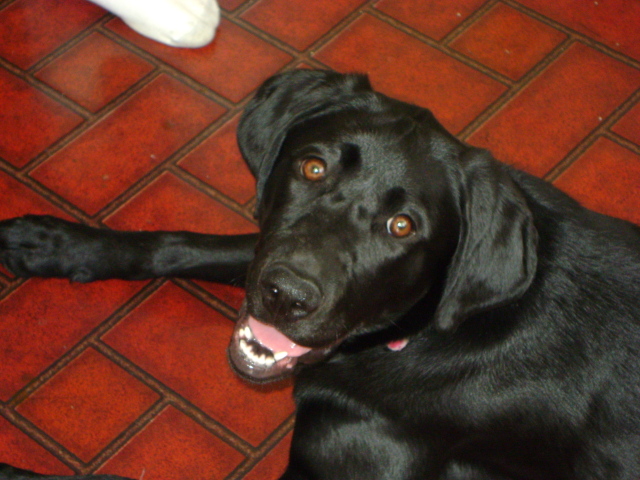 Black lab - 1 yr
QuestionSheba
QUESTION: My lab loves to bite her
Black lab - 1 yr
QuestionSheba
QUESTION: My lab loves to bite her
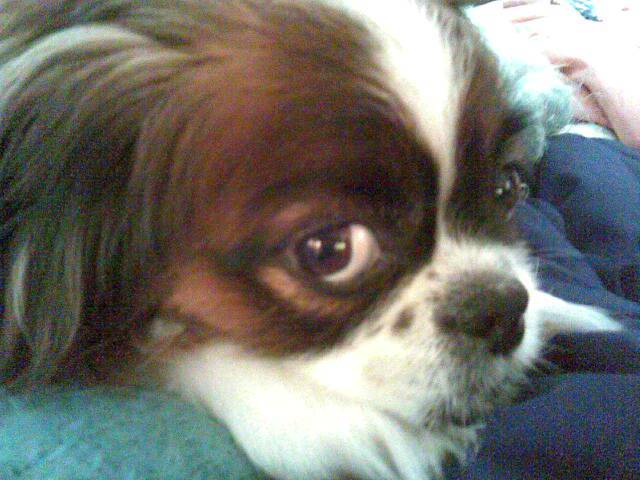 Post bladder surgery potty training for INDOORS!
QuestionTiki
QUESTION: Dear Dr. Connor,
My 10 ye
Post bladder surgery potty training for INDOORS!
QuestionTiki
QUESTION: Dear Dr. Connor,
My 10 ye
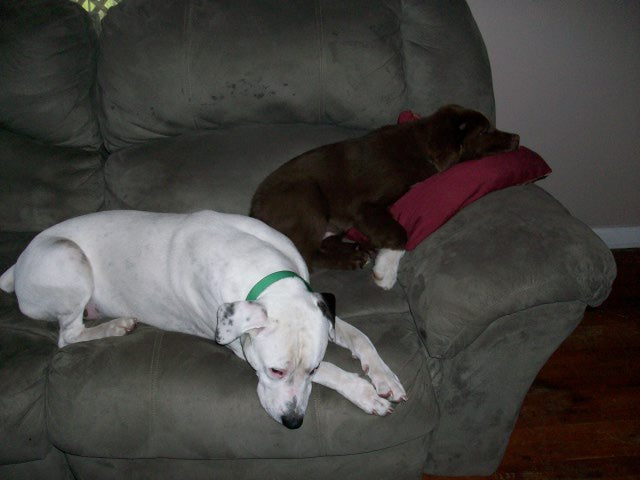 American Bulldog aggression
Question
Buddy and Rez
I have a 2 year old Ameri
American Bulldog aggression
Question
Buddy and Rez
I have a 2 year old Ameri
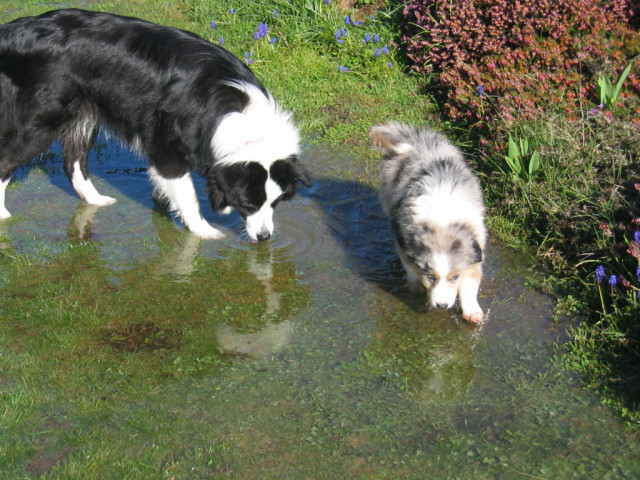 Dog in Heat?
QuestionLily and Jorge
QUESTION: Hello,
We have
Dog in Heat?
QuestionLily and Jorge
QUESTION: Hello,
We have